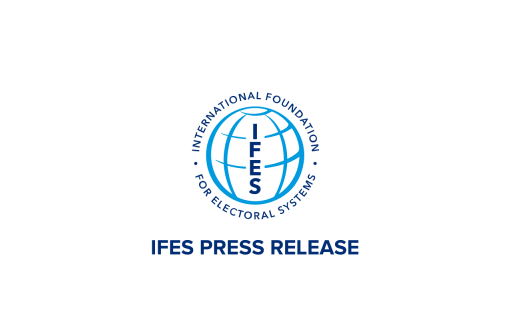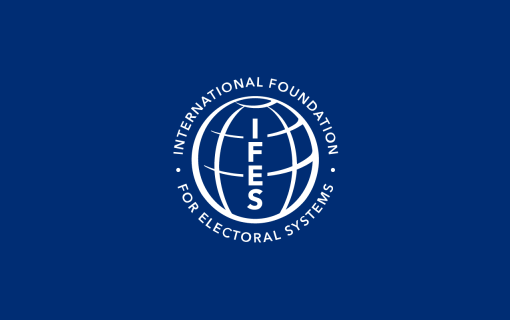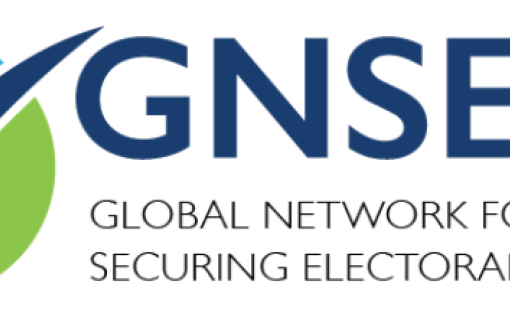
Review of "The Credibility Challenge: How Democracy Aid Influences Election Violence"
The International Foundation for Electoral Systems' (IFES) Dr. Fernanda Buril, a program officer for the Americas and electoral operations technical coordinator, reviewed The Credibility Challenge: How Democracy Aid Influences Election Violence for the Democratization Journal.
This is an accepted manuscript published by Taylor & Francis in the Democratization Journal on September 16, 2019, available here.
In The Credibility Challenge: How Democracy Aid Influences Election Violence, von Borzyskowski develops and persuasively lays out her Credible Election Theory (CET), which posits that (1) elections are less likely to turn violent when they are perceived as credible, and (2) international election aid can influence such perceptions of credibility (positively or negatively) and thus affect people's incentives to engage in election violence. The author unpacks electoral assistance programming to assess how election observation and technical assistance to election commissions have different effects on perception of credibility and on pre- and post-election violence.
Von Borzyskowski tests her theory using both existing and original datasets covering more than 470 national elections in 70 countries in Latin America and Africa from 1990 to 2012. She finds that international election observation can contribute to reducing pre-election and election-day violence by increasing accountability of election stakeholders and dissuading them from manipulating the electoral process. After the elections, observers can also contribute to peaceful acceptance of results by issuing reports that certify the legitimacy of the electoral process. When observers issue reports that condemn the elections, however, they increase the incentives of losers and their supporters to challenge results and potentially engage in violence (either directly or as a result of repression of peaceful protests by winners). Von Borzyskowski suggests that such condemnation reports would make the calculations of costs and benefits of challenging the election easier, as they would indicate the challengers’ chances of being successful to be higher. Thus, these reports would be able to mobilize losers and supporters around their verdict and solve what is known as the collective action problem. Technical assistance, on the other hand, to some extent, could lead to less violence at any stage: before elections, by increasing the capacity of the election commission to administer successful elections and reduce chances of fraud or malpractice; and after the elections, by increasing voters’ trust in the counting and transmission of results.
The author's extensive data analysis not only makes a powerful argument regarding the different effects of technical assistance and election observation on pre- and post-electoral violence, it also sheds light on other heated topics in the democracy field, such as how a country's economy might influence election-related violence. The author also does a good job explaining how pre-electoral and post-electoral violence are different phenomena, motivated by different factors. She preempts most criticisms to her findings by carefully considering alternative explanations for the correlations and using a multitude of robustness tests. The book is inevitably heavy on statistical analysis and the author makes a point to explain her choice of each method used. While this discussion might prove challenging for less experienced readers to follow, it only contributes to the transparency of her work. The absence of Asia in the quantitative analysis, even though electoral violence is prominent in the region, is noticeable but justified by its less consistent democratization processes during the period analysed. Europe is also excluded given its relatively low rate of electoral violence and of technical assistance received, even though Eastern Europe could provide some interesting data points. In the qualitative sections of the book, the author does analyse or mention cases from these excluded regions, such as Bangladesh and, very briefly, Georgia and Ukraine, to illustrate how her arguments can hold true in different settings. The choice of country examples might come out as somewhat random, but the illustrations help readers have a better understanding of what technical assistance means in practice.
While the book's findings are very solid, they bring important policy implications that deserve further debate. Von Borzyskowski suggests that international organizations should carefully consider and perhaps refrain from deploying missions to observe elections that they expect to condemn, since this condemnation is likely to incentivize violence. She does present arguments in the beginning of the book as to why she believes violence is always undesirable for democracy, pointing out its low levels of success in leading to regime change and its effects on voter intimidation, dissatisfaction, and turnout. While it is hard to object to the argument that violence undermines democracy, it is still worth debating whether condemnation reports are a valuable tool for voters and candidates to marshal in their fight to promote and protect democratic principles and to get the attention of the international community. Protests that start peacefully might take violent turns, but without the “international certification of fraud”, these protests might not be triggered, and the elections remain unchallenged, even though not fair. If, as she discusses in the book, election assistance is a form of peacebuilding, the debate should be open as to whether one accepts absence of violence as sufficient peace.
Given our increasing need to understand the effects and effectiveness of democracy aid, The Credibility Challenge: How Democracy Aid Influences Election Violence is a very important read for both academics and practitioners, in donor and implementer organizations, regardless of whether or not the reader agrees with the policy implications of the author's arguments. By showing the effects of technical assistance as a credibility enhancer and of election observation as an accountability enhancer or fraud certifier, the book can help us make better use of development aid and select most appropriate approaches depending on context and time in the electoral cycle. It also serves as a good reminder that, in the democracy field, good intentions do not necessarily lead to positive results.
The views and opinions expressed in this review are those of the author and do not necessarily reflect the position of IFES.











